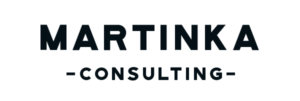One of my clients is evaluating an acquisition target that, at least on the surface, is the perfect model for an earnout structure to be included in the deal. First, let’s define what is an earnout and give a couple examples of what it is and isn’t.
An earnout is when part of the price for a business is variable, based on future performance. 99.9% of all buy-sell deals will some or all of the following components: a fixed price, a cash downpayment and a note to the seller (a note to the bank from the buyer is part of the cash downpayment). I write 99.9% of deals because as I write this a client is purchasing a complementary business (in California) and it is a pure earnout, the total price is a percentage of future sales.
An earnout is not a vehicle for the buyer to pay 80% of the business’s value instead of 100% and have a variable component so the seller gets 100% only if everything goes right. It is also not a way for the seller to get 130% of the business’s value because they “need” 130% and therefore want a share of future profits. An earnout is for when circumstances are such that a positive change is projected but the seller won’t be around to reap the rewards from the costs incurred setting up that change and potential growth.
What my client is looking at is a company that has added a new product line in the last two years. Sales of this product were very small in 2009, grew substantially in 2010 (as did profits) and these sales did not cannibalize sales of their other products. These sales also did not significantly increase overhead so most of the new gross profit went right to the bottom line.
Projections for 2011 and beyond for this product are fantastic. However, they are still only projections. There is nothing to base them on other than quick growth in 2010 and my client, like any buyer, needs to make sure 2010 is a trend and not a spike. The seller is valuing the business based on what it will do over the next couple years. Banks and buyers will value it based on what it’s done. A deal that is fair to both sides will have a fixed price based on history and a variable component (earnout) based on the business meeting it’s projections over the next 2-3 years. In this way both parties are happy and the risk of meeting projections is not solely on the buyer.

